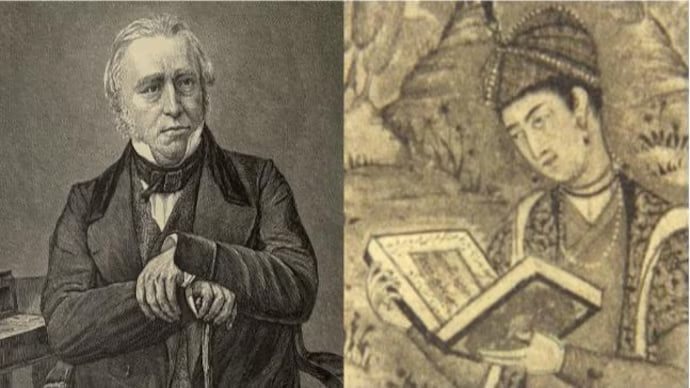- National
- What Was Macaulay’s Mindset, and How Did It Harm India?
What Was Macaulay’s Mindset, and How Did It Harm India?
.jpg)
(Virang Bhatt)
Prime Minister Narendra Modi recently urged the nation to free itself, in the next ten years, from Macaulay’s cultural and educational mindset.
This is not merely a political statement; it is a call to revive India’s civilizational knowledge, identity, and intellectual self-confidence.
But what exactly was Macaulay’s mindset, and how did it impact India?
Macaulay’s Mindset: A Designed Strategy to Weaken Indian Identity
In 1835, British parliamentarian Thomas Babington Macaulay wrote the Minutes on Indian Education, which became the foundation for a complete overhaul of India’s educational structure.
His goal was clear: to create Indians who were
“Indian in body, but English in intellect.”
1. Contempt for Indian Knowledge Systems
Macaulay believed that:
“A single shelf of a good European library is worth the whole native literature of India and Arabia.”
This was a deliberate attempt to portray British culture as superior and Indian traditions as inferior.
2. Education Meant for Clerks, Not Enlightened Citizens
The purpose of education, according to Macaulay, was to produce obedient clerks for the British administration—not thinkers, inventors, or leaders.
Thus began India’s long phase of rote learning,degree obsession, and job-centric education.
3. Discrediting Indian Languages
Indigenous systems like gurukuls, pathshalas, and madrasas were labeled “backward,” while English was promoted as the sole medium of “high knowledge.”
Even today, English fluency is mistakenly equated with intelligence.
Five Major Losses India Suffered Due to Macaulay’s Model
1. Decline of Indian Languages and Local Literature
Regional languages lost relevance in higher education.
People began to believe that true knowledge existed only in English.

2. Indian Scientific and Knowledge Traditions Were Marginalized
Vedic mathematics, Ayurveda, astronomy, metallurgy, logic, performing arts—
all were pushed aside as “irrelevant.” India’s ancient intellectual heritage faded over time.
3. Rise of Rote Learning and Exam-Centric Education
Skills, character, life-values—once central to education—were replaced by rote memorization and exam scores.
This has led to the modern crisis where youth have degrees but lack real skills.
4. Psychological Inferiority and Cultural Disconnect
The false notion that Western culture = superior,Indian culture = backward
damaged national confidence and encouraged blind imitation of the West.
5. Weakening of National Consciousness
Indian heroes, history, and civilizational pride faded from textbooks.
Generations grew up believing greatness existed only in the West.
What Should India Do Now?
1. Strengthen Education in Indian Languages**
High-quality academic material in science, technology, law, and medicine must be created in regional languages.
2. Reintegrate India’s Knowledge Systems
Vedic mathematics, Ayurveda, yoga, ancient astronomy, metallurgy, and Indian economics must be re-evaluated and integrated scientifically into mainstream education.
3. Link Education to Nation-Building, Not Just Jobs
Leadership, ethics, entrepreneurship, and social responsibility must become part of the curriculum.
4. Promote Local Heroes and Regional History
Students must learn about India’s own icons—from Somnath and Chandragupta to Rana Pratap and Sardar Patel.
5. Combine Technology With Tradition
In the age of AI and digital learning, India can present its ancient knowledge in modern scientific formats to the entire world.
About The Author

Lorem Ipsum is simply dummy text of the printing and typesetting industry. Lorem Ipsum has been the industry's standard dummy text ever since the 1500s, when an unknown printer took a galley of type and scrambled it to make a type specimen book. It has survived not only five centuries, but also the leap into electronic typesetting, remaining essentially unchanged. It was popularised in the 1960s with the release of Letraset sheets containing Lorem Ipsum passages, and more recently with desktop publishing software like Aldus PageMaker including versions of Lorem Ipsum.







.jpg)
















